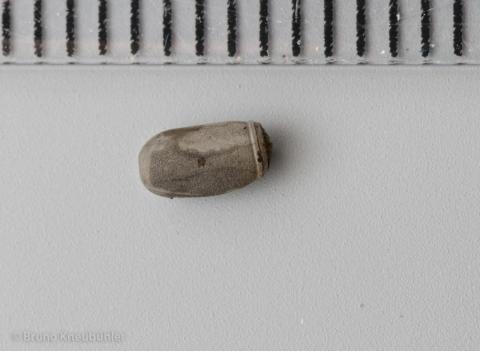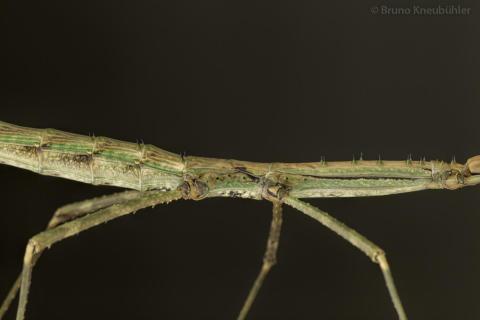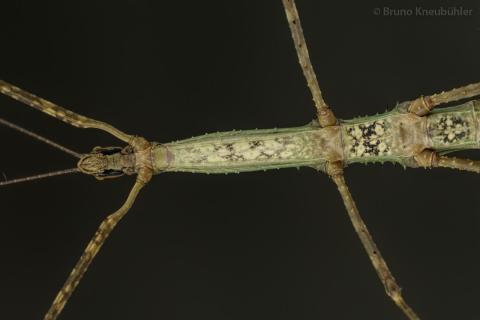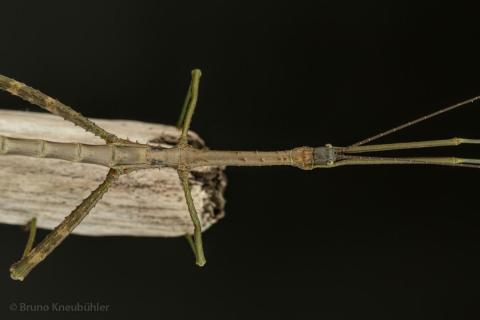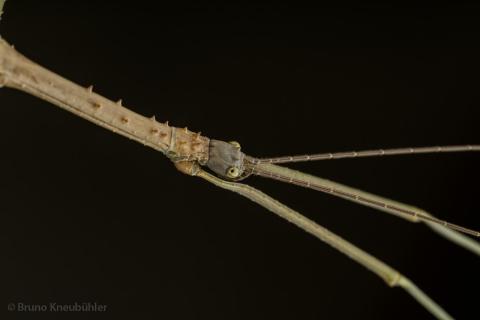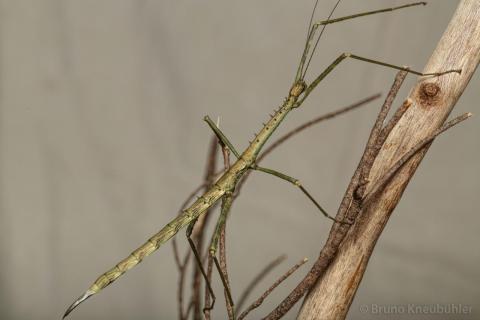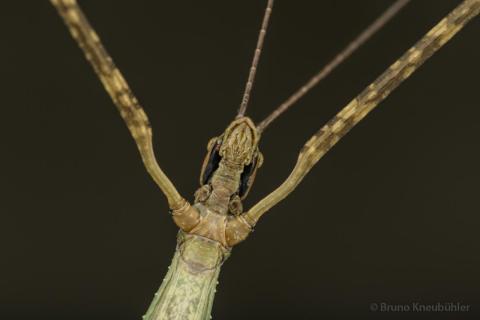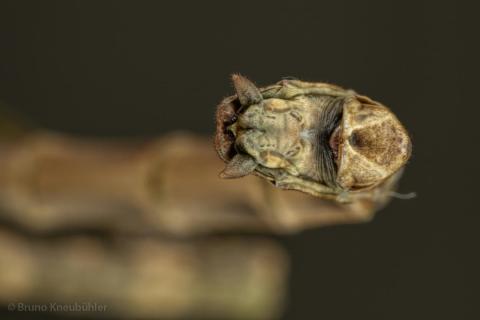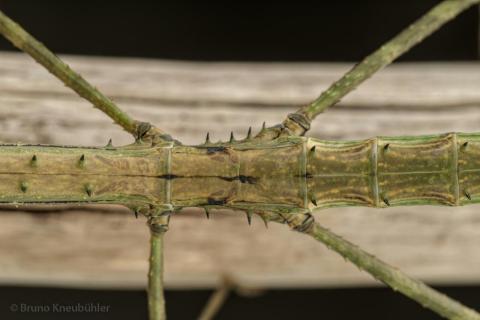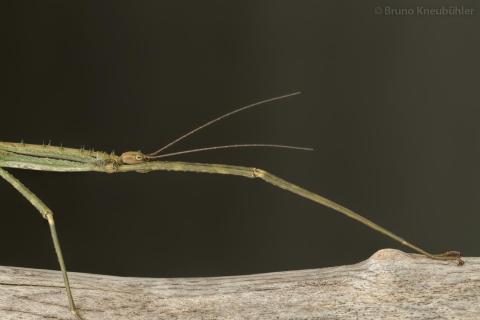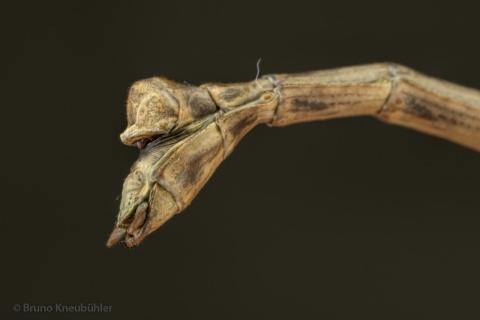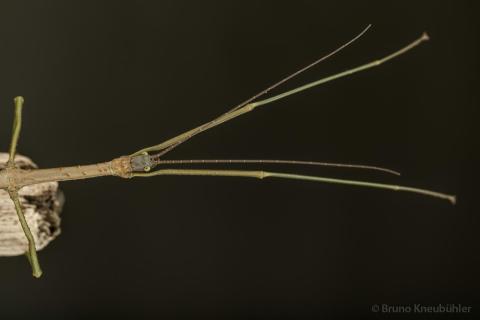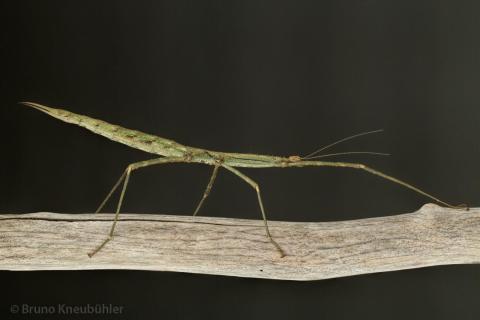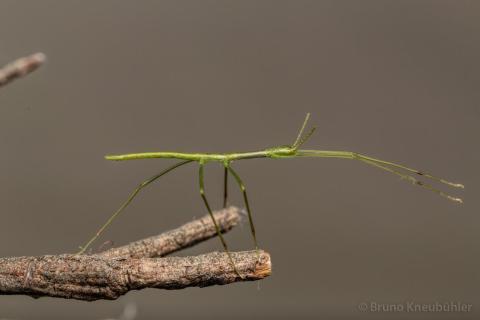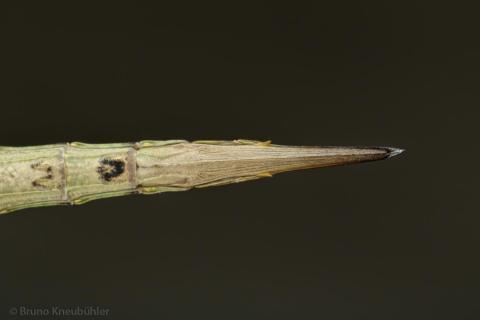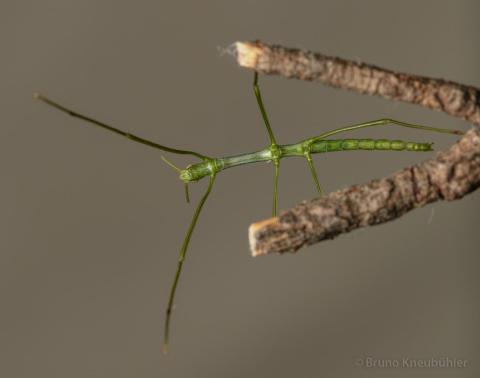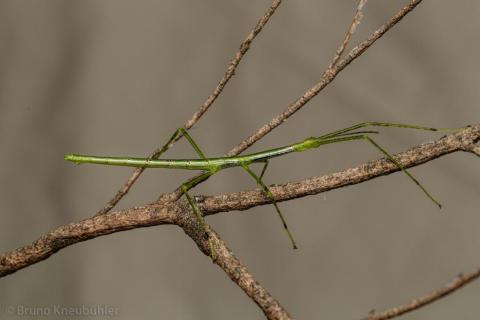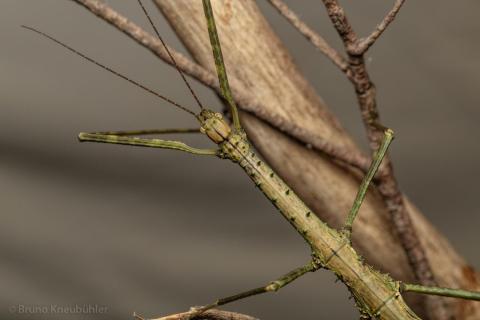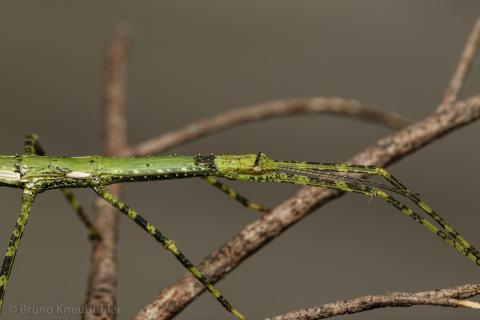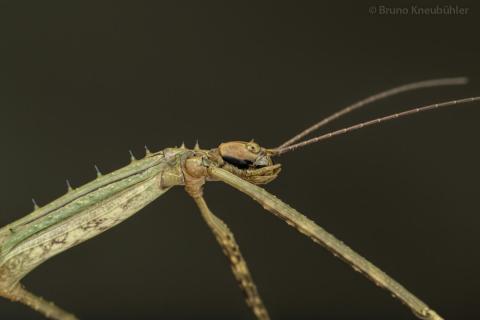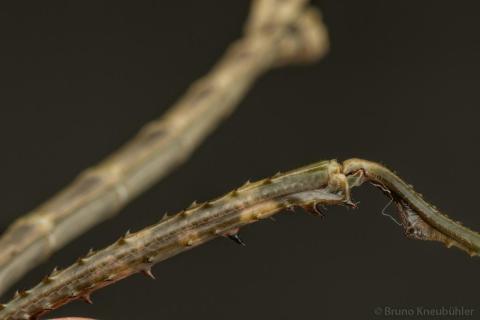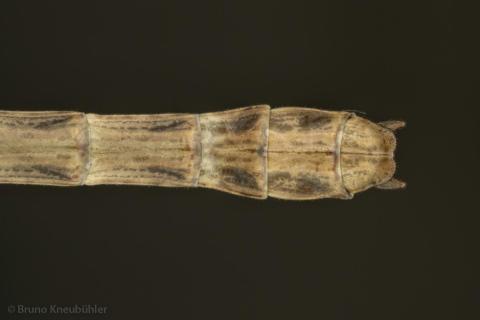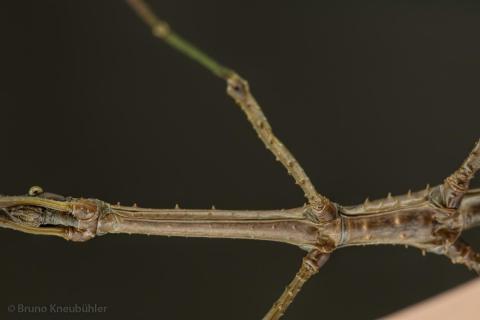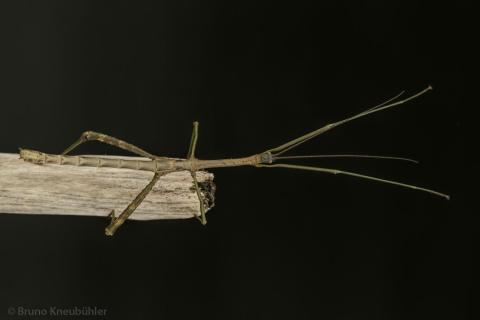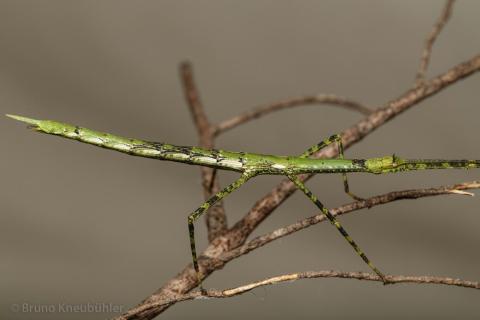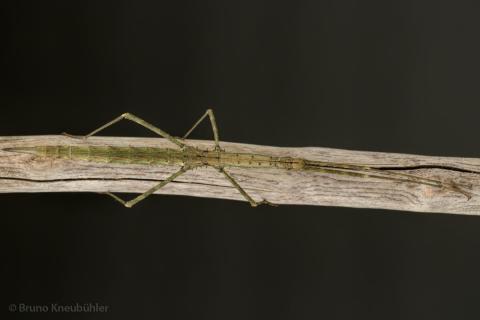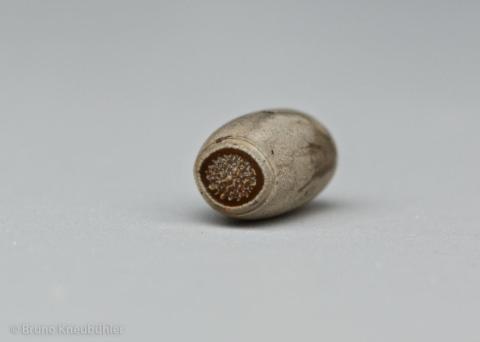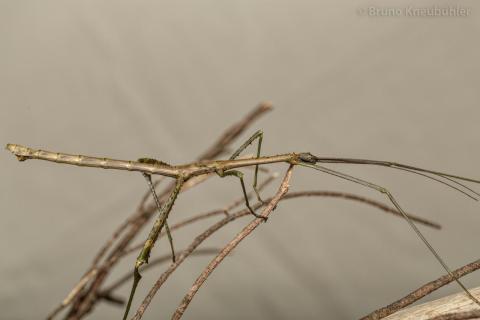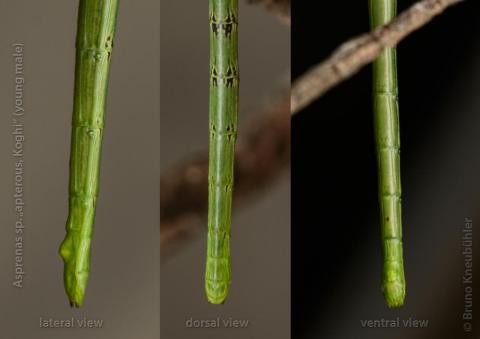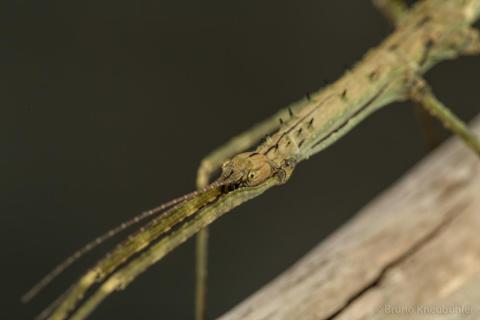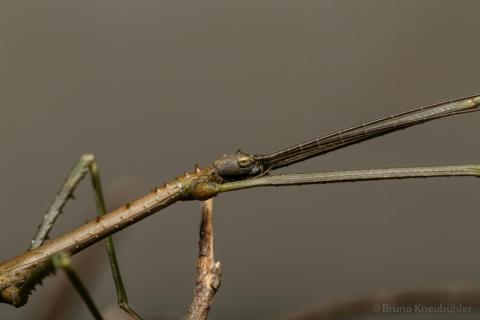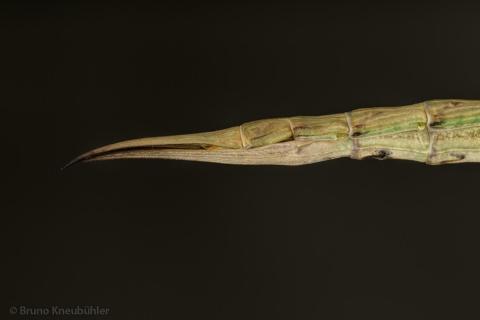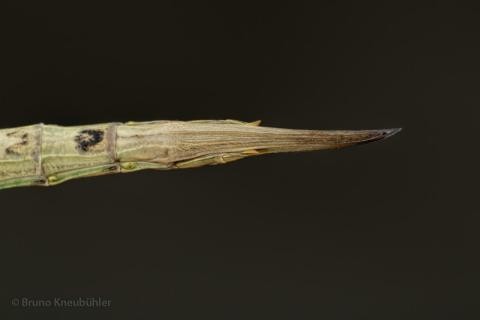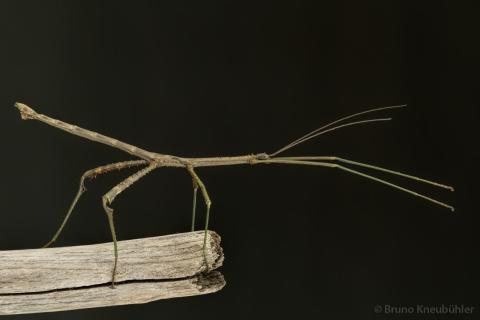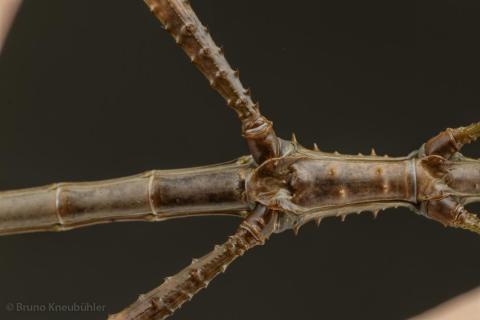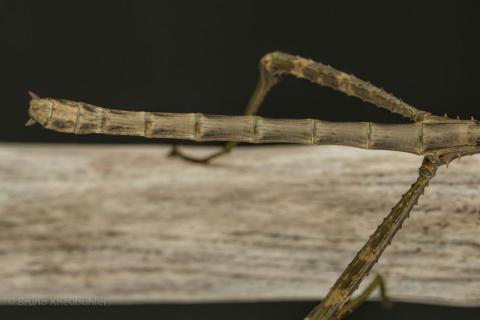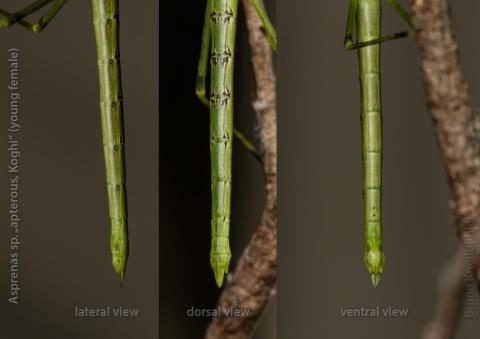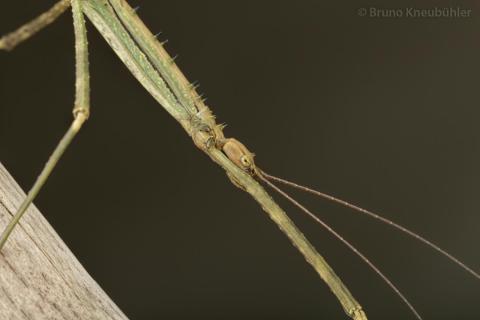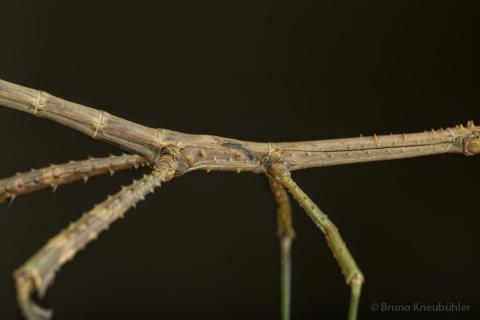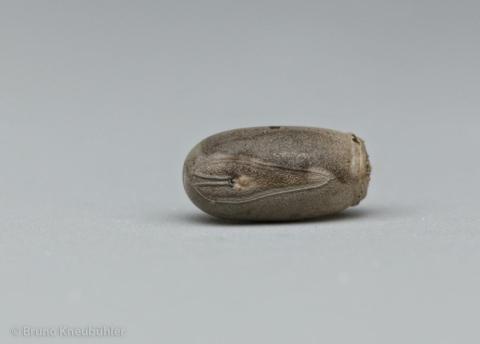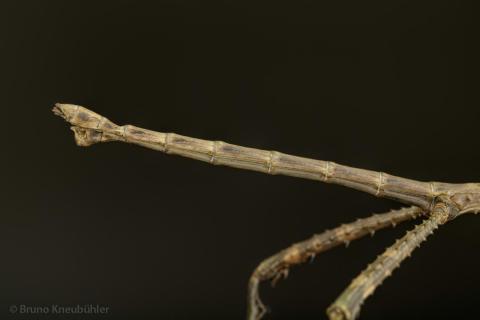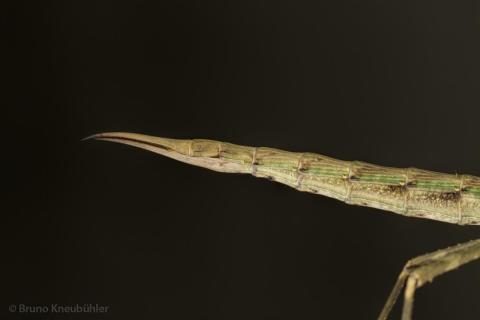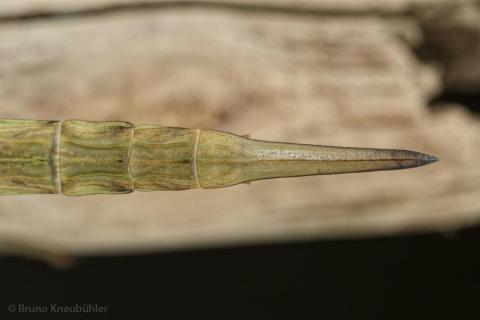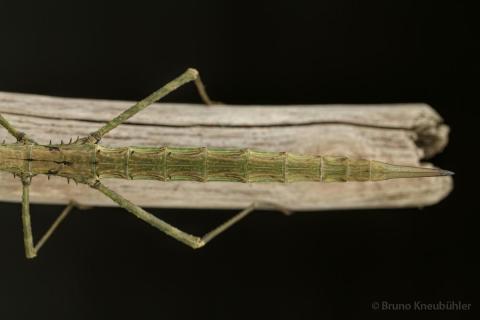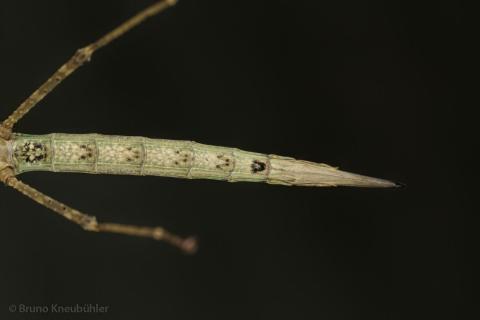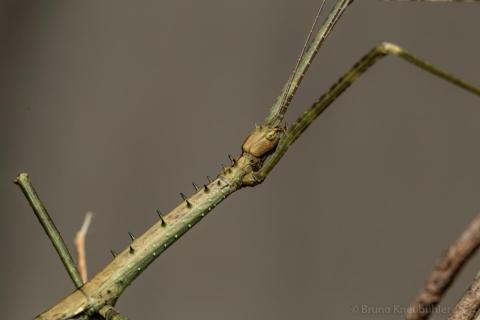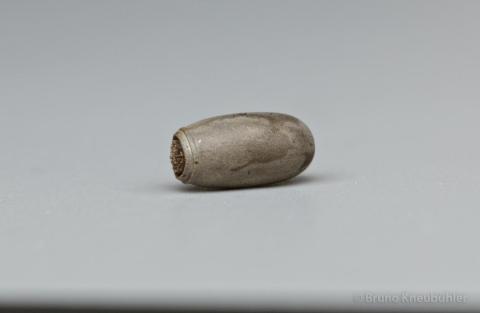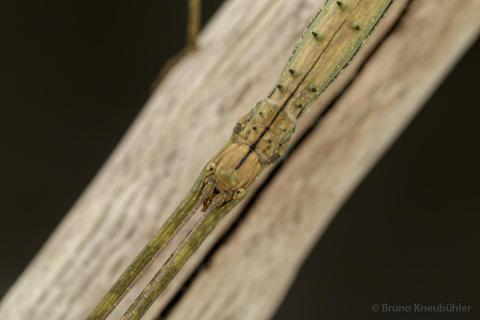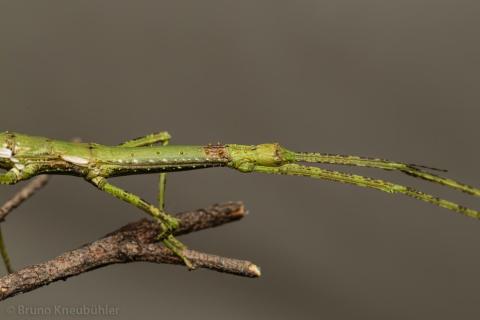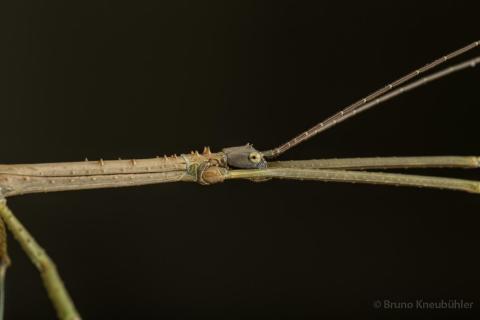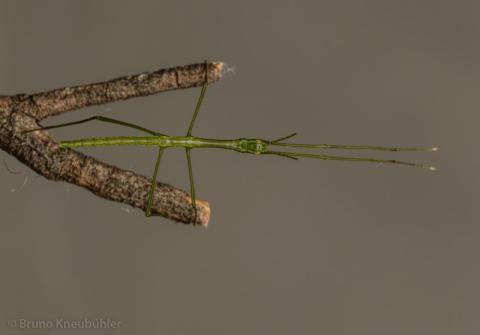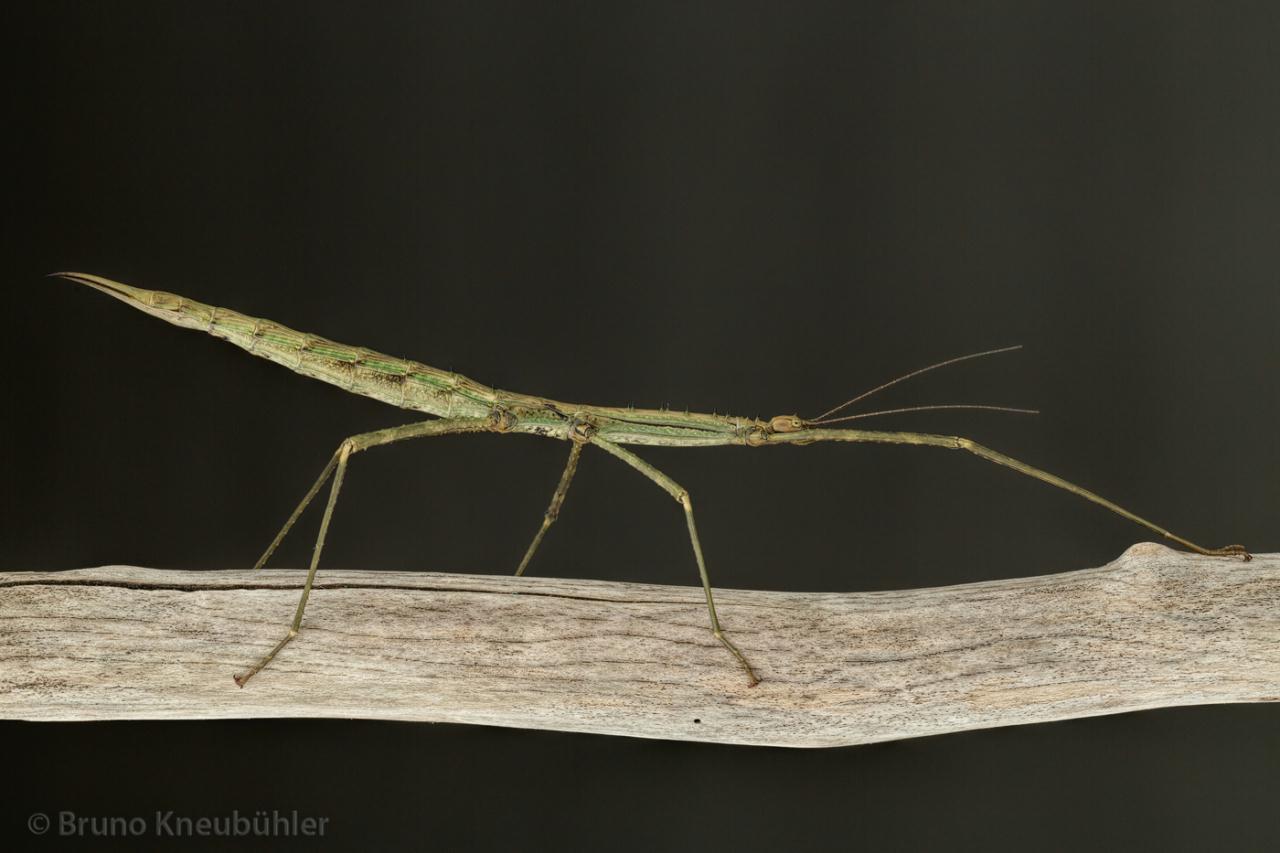
Genus
Species
Stock
CLP
659
Culture status
Unknown
Foodplants
Bramble (Rubus spp.)
Hazel (Corylus avellana)
Salal (Gaultheria shallon)
Breeding notes
Asprenas femoratus "Koghi"
(by Bruno Kneubuehler)
General Informations
- this culture was formerly known as Asprenas sp. "apterous, Koghi"
- ID by Frank Hennemann (DE)
- provenience: Mt. Koghi (New Caledonia)
- different phasmid taxonomists suggest that this might be Asprenas impennis, a definite ID is not yet available
- F1 CB culture by Bruno Kneubuehler (20145)
- further taxonomical informations ➤ phasmida.speciesfile.org
- this is a pure culture, and serious breeders are asked to not mix it with cultures of a different provenience
Females
- sturdy, medium sized phasmids
- body length 10 - 11 cm
- brown mottled or green-brown
- short antennae
- long "ovipositor" (subgenital plate, supraanal plate)
- spines on thorax and head
- black cheeks
Males
- rather sturdy too
- 8 - 8.5 cm
- brown with greenish legs
- spines on thorax, head and legs
- black cheeks
Food Plants
- bramble (Rubus spp.)
very well accepted by nymphs and adults - hazelnut (Corylus avellana)
very well accepted by nymphs and adults - Salal (Gaultheris shallon)
very well accepted by nymphs and adults
Breeding, Behaviour
- active mainly during the night, though males are sometimes active during daytime too
- they try to drop to the ground and / or crawl away when they feel threatened
- eggs are stuck into a suitable substrate, e.g. humid peat
- a sand-filled (about 3 cm high), shallow box is also well accepted for oviposition. But the box in a corner of the cage. Eggs have to be sieved out of the sand once per week (to prevent that they dry out)
- 30 - 40 eggs per clutch
- 1 clutch of eggs every 1 - 2 weeks
- incubation (HH-method on slightly damp sand) about 3 - 4 months at 20 - 23 °C
- nymphs hatch during the night
- a higher humidity of 75 - 80 % rH is needed
- one can spray them regularly with chlorine-free water, but the water should dry up again
- very easy to breed in my experience
Basics of breeding phasmids
- only one species per cage, overpopulation is one of the main reasons for breeding failures
- keep nymphs seperate from the adults
- choose the cage big enough, when in doubt it is better to choose a cage too big than too small
- a ventilator often supports breeding results
- provide enough light, but avoid direct sunlight (overheating)
- try to keep temperatures below 25°C
- a nocturnal fall of temperature is healty for the phasmids
- do not spray too much, phasmids are no fish ! The spray should dry up again
- minimize disturbances (loud music, commotions, light at night, ect.) minimal
useful Informations
- how to breed phasmids ➤ www.phasmatodea.com/web/guest/199
- PSG list ➤ www.phasmatodea.com/web/guest/psg
- recognize difference between male / female nymphs ➤ www.phasmatodea.com/web/guest/tips-and-tricks
- Online Culture List ➤ www.ulft-ict.nl/phasma/kweeklijst/
